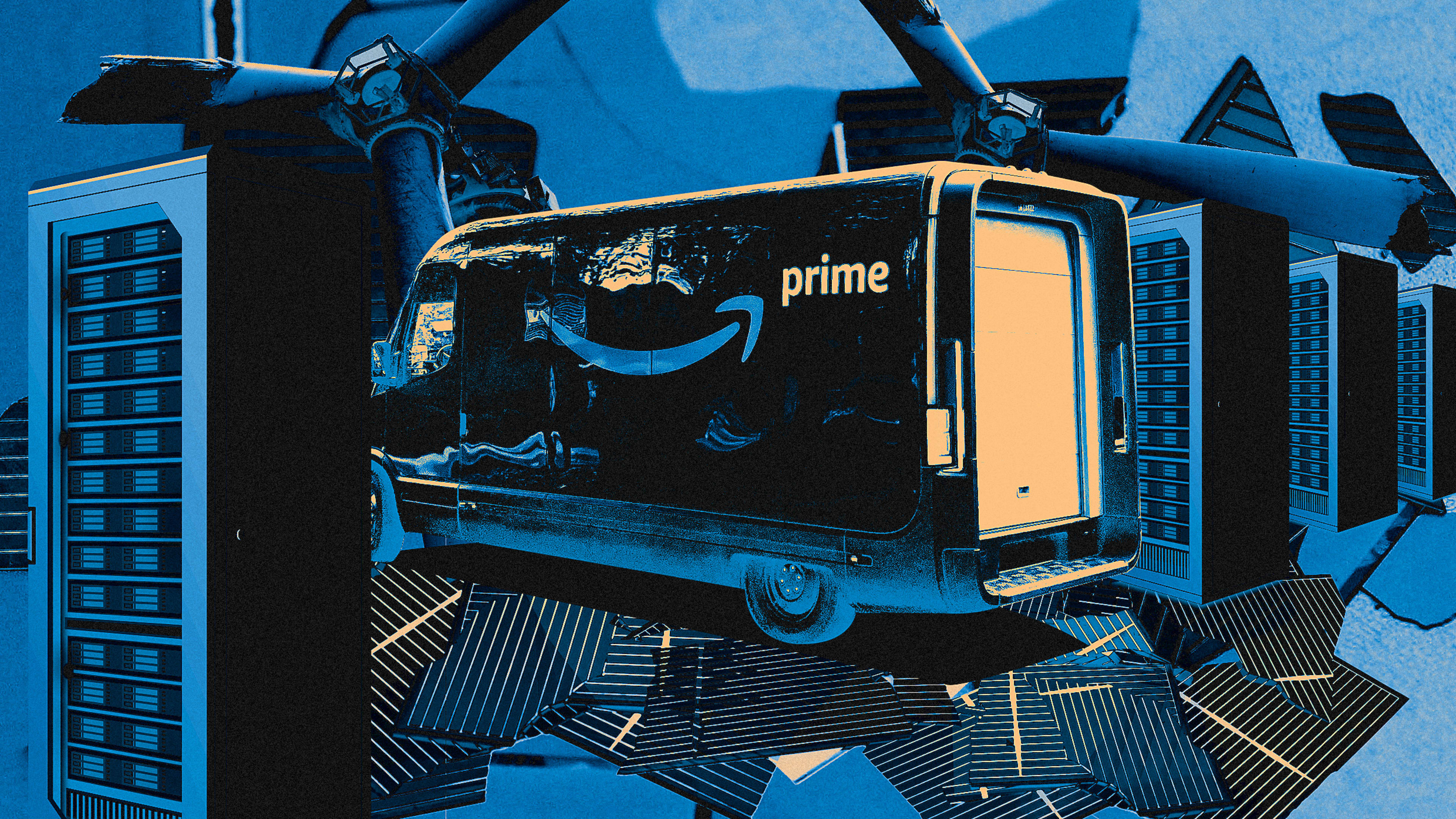In rural Oregon, a small electric utility called Umatilla Electric Cooperative used to rely mainly on clean hydropower. It had a small carbon footprint. But when large data centers came to the area—built by companies like Amazon—demand for power soared, and the utility had to find sources other than hydro. Over the past decade, the utility’s carbon emissions per megawatt hour have increased by 543%.
A recent bill in Oregon would have required large data centers, cryptocurrency miners, and other big power users in the state to shift to 80% clean energy by 2030, and 100% by 2040. (The whole state reached 70% clean energy in 2022.) Amazon privately lobbied against the bill—despite the fact that the company presents itself as a climate leader, with a goal to reach net-zero emissions by 2040 itself. The bill died in a committee last week; Pam Marsh, the state representative who sponsored it, says Amazon helped kill it.
“Companies like Amazon continue to tout their own heroic measures while immediately lobbying against bills like this one in Oregon that would accelerate those same solutions at the speed and scale we need,” says Bill Weihl, a former tech company sustainability executive who now leads the nonprofit ClimateVoice, advocating for the tech industry to support stronger climate policy.
Another law, passed in 2021, already says that large, investor-owned utilities in Oregon have to move to 100% clean electricity on the same timeline. But that left out some areas where power use is quickly growing, including utilities like Umatilla that serve Amazon’s data centers.
“We realized that within the 25% of the state that’s not served by the large utilities, in some cases we have these outlier uses in data centers and potentially crypto miners,” Marsh says. “And we realized that big data centers can consume as much electricity as 80,000 homes. So they’re huge.”
In a statement, Amazon said the company opposed the bill because it didn’t address the challenges of adding new renewable energy. “Building new renewable projects requires infrastructure investments in the grid, and today there are hurdles in key areas like permitting and interconnection,” it said.
It’s true that infrastructure is a major challenge. “Especially since the Inflation Reduction Act was passed, economics are no longer the barrier to building renewable energy and decarbonizing the grid,” says Mark Dyson, who runs the carbon-free electricity program at the nonprofit RMI. “Now the barrier to building renewable energy and decarbonizing the grid is the grid infrastructure that is outdated.”
But it’s not clear why it wouldn’t be possible to set a goal to reach clean energy while simultaneously working on issues like how to build new transmission lines faster. “We also wrote an ‘opt out’ in the bill so that if we get toward 2030 or 2040 and something happens in the world that makes it impossible for them to get to those goals, there would be a way for [data centers and other large energy users] to go on the record and certainly indicate that, which is only fair,” Marsh says. “We’ve done the same thing for the big utilities.”
An Amazon spokesperson told Fast Company that the bill had an “ambiguous” pathway for compliance and that there should have been better stakeholder engagement as the bill was drafted. “I think they just don’t want to be regulated,” Marsh says. “They have a corporate commitment to sustainability and climate action, which is a commitment that I now question.”
Amazon says it plans to reach a goal of 100% renewable electricity for its operations by 2025. It’s now the largest corporate buyer of renewable energy in the world. Like many other companies, it defines “100% renewable” as matching its annual energy use with renewables across an entire electric grid; a specific data center might still get dirty energy some of the time that’s offset by projects elsewhere on the grid.
In Oregon, Amazon is adding new fuel cells to help supply more electricity for some of its data centers that will run on natural gas, though they could run on hydrogen in the future. They’re meant to be a temporary measure until new renewable electricity can be added, though it’s not clear how soon that can happen. The company is also working with Umatilla Electric Cooperative in an agreement that lets it select where the utility is getting power for Amazon’s data centers.
“The level of hypocrisy here would be hilarious if it weren’t so disturbing—naming a sports arena after your “climate pledge” for clout while lobbying to bypass the basic clean energy requirements that public utilities are held to,” says a current Amazon worker who is a member of Amazon Employees for Climate Justice, a group that pushes the company to take stronger climate action. “It makes me feel bad for the sustainability team here—they’re working their butts off because they know better than anyone how little time we have to switch Amazon and the rest of the economy to renewables before catastrophe hits. But then the company undercuts that mission by building new dirty energy infrastructure.”
Marsh argues that the bill’s 2030 and 2040 goals are feasible for companies to hit. “If [large] utilities believe they can make the 2030 objective, I am very confident that our data centers can do the same,” she says. The bill targeted data centers and crypto mining, rather than small utilities, because data centers have caused the current challenge.
“When a data center locates in one of these smaller communities, the excessive use that they require pushes the utilities outside of the allocation that they get from [clean hydropower],” Marsh says. “So then the utilities are having to go to the larger outside energy market and buy energy that is very often coal or natural gas based. Without the data centers, the utilities would be fine.”
Recognize your brand’s excellence by applying to this year’s Brands That Matter Awards before the early-rate deadline, May 3.
